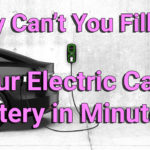Launch controls are used in a car to help it get faster off the line. In order to launch a car properly, you need to match the rev to get the most torque out of your system depending on the type of surface, the tires road temperature, etc.
The simplest form of launch control is an auxiliary rev limiter, which simply limits the car’s rev at a certain rpm when the clutch or brake pedal is pressed (mostly 4-5.5k rpm) lower than the normal rev limiter (almost 7-9k rpm).
So now the driver can simply hold the brakes and slam the pedal flat, revving the engine in its torque-rich zone. And as soon as he takes his foot off the brake or the clutch pedal, he is consistently off the line every time. This allows him to launch the car without too much wheel spin, i.e. when the tires are struggling for traction, and prevents it from launching at lower rpms where the engine is struggling to produce enough torque and power to pull the car ahead. This simple configuration is mostly used in the factory launch control systems.
Aftermarket launch control systems also come in a two-step form if coupled with a turbocharged engine. The engine rpm is plotted quite differently against the throttle position when the car is on hold. When the clutch or brake pedal is depressed, the throttle is programmed to rev the rpms higher if the pedal is pressed halfway, to build up as much boost pressure for the turbo to spool up. When the required boost pressure is achieved, the driver can slam the pedal to the metal and the rpm drops to the optimal range (4-5.5k rpm) and then the driver can release the brake or clutch to get his perfect start.
The rev is limited in these launch control systems, often by a soft cut or a hard cut.
A hard-cut rev limiter is an easier and more reliable solution to limit the engine revs. It is the most commonly chosen by the manufacturers themselves. This simply reduces the amount of fuel allowed to mix in with the air and burn in the cylinder. In return, the engine produces drops in power and rpm. This type of hard cut is deployed when the rpm is just approaching the limiting value. But when the driver aggressively slams the pedal and hits the redline, the fuel supply is totally cut off for a moment to bring the revs back down and switched back on as it reaches the safe zone.
A soft-cut rev limiter is deployed by delaying the ignition timing in the cylinders, resulting in a loss of power, a drop in the engine rpm, and some unburnt fuel mixture in the exhaust of the car. A heavily retarded ignition timing results in the fuel combustion when the exhaust valve is opened or is about to open, this results in a greater boost pressure but also puts the exhaust system of the car in significant strain. It can also result in pops and bangs in the exhaust and cars often result in throwing flames off the exhaust burning that unburnt fuel in the exhaust system.
The launch rpm is adjustable in most cars and is set according to the conditions. The amount of rpm needed to launch a car properly depends on the type of surface, tire temperature, road temperature, and the engine’s torque curve. More modern launch control systems use a mixture of both limiters in the ECU, adjusting the fuel ratio as well as the ignition timings to limit the car’s rpm and build up a significant amount of boost as well.
Launch control systems have advanced and matured over time, and most of modern performance cars have a reliable launch control mechanism that provides consistent 0-60 miles per hour without much wear to the clutch or transmission.


